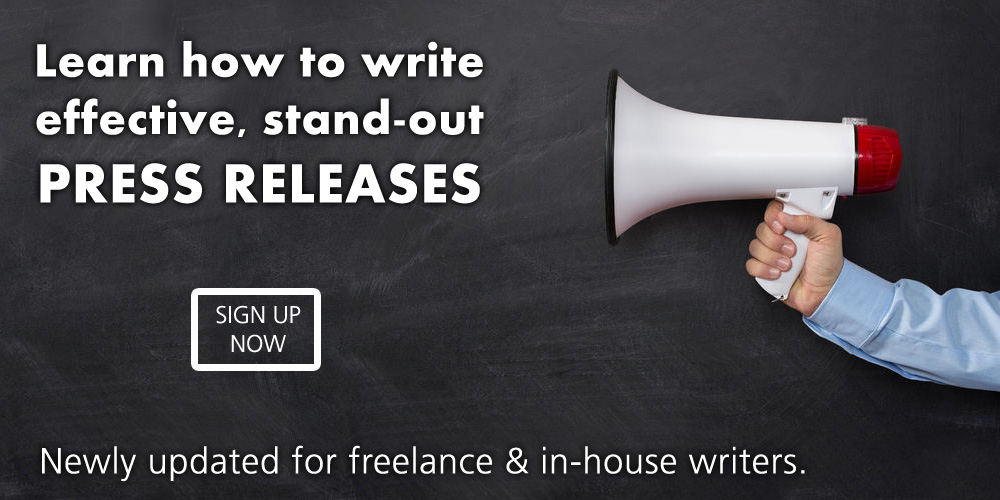Never doubt that what may seem like an effortless read in a publication has taken hours of conjuring, sculpting and editing. Here are 20 essential tips for writing better articles.
1. Choose your point of view (PoV), and stick to it throughout your article.
Point of view refers to the perspective of the narrator in the article. Who is “telling the story”? Is the story written from first-person perspective (I)? Third-person (they/ him/ her)? Second Person (You)?
A common mistake that student writers make is to start writing in one perspective, and then to muddle the perspectives. Inconsistencies in Point of View (PoV) can easily creep into an article, especially as many journalists use the “we” perspective, and then mix it up with the pronouns “you” and “one”.
For example, the sentence: “The important thing for us is to be able to channel one’s anxiety into positive action, instead of brooding inaction,” is almost nonsensical. “The important thing for us is to be able to channel our anxiety into positive action, instead of brooding inaction,” works.
Ask yourself: What PoV would work best for your chosen target publication and angle?
Analyse your target publication and ask the following: are most of the articles written in formal third person (e.g. “Statistics have shown that women in their eighties….”)?
Are they more personal, first-person stories (e.g. “The statistics I’ve seen show that women like us, in our eighties….”)?
Is it the second-person, “you” form to create intimacy (e.g. “Statistics have shown that women like you, in your eighties….”)?
The point of view you choose has a direct impact on the tone and style of your article.
2. Use transitions between sentences, and between paragraphs to glue your article parts together.
Transitions are “breather” sentences that lead the reader from one paragraph to another, creating a logical and cohesive flow throughout the piece. Transitions glue facts and explanation together, and help to keep the reader (who may be quite lazy!) interested.
Some ways to create transitions are:
- Starting a sentence with a conjunction: like “but”, “however”, “and”, “nevertheless”, “therefore”, “also”, “secondly”, “when”, “since”, “while”, and “according to”.
- Using punctuation that ties a group of sentences together, like the colon and semi-colon.
- Balancing or contrasting ideas, such as listing a pro and then the contrasting con.
- Using a graphic image woven throughout the story, which holds the discussion together.
- Inserting colloquial opinion statements/ personal input from the writer. For example: Ending a paragraph with “See what I mean?” or “Right?” or “You may not be far off the mark.” Even interjections like: “Sounds like garbage to me!” or “Here we go again…!” can be used as transitions.
- Creating anecdotes or scenes to tie paragraphs together.
Examples of transitions:
For example; for instance; in other words; put another way; seems clear from this; simply stated; stated differently; that is; to clarify; to illustrate the point, although; as opposed to; but; conversely; counter to; even so; even though; however; in spite of this; in the meantime; nevertheless; on the contrary; on the other hand; otherwise; sometimes; still; yet; again; another key point; the first thing to remember; for this reason; frequently; important to realize; indeed; in fact; key point; most compelling evidence; most important information; must be remembered; on the negative side; on the positive side; point often overlooked; significant that; surprising; surprisingly enough; to emphasize; to point out; to repeat; truly; with this in mind.
3. Use anecdotes to illustrate a point, or introduce a new one.
An anecdote is a little story, and everyone prefers a story to bland facts.
For example:
Fact: Since many self-destructive habits have been with us since childhood, we seldom recognize or question them. And because we feel most comfortable with the familiar, it often takes a personal crisis to precipitate change.
Now, the same thing, but using an anecdote:
Bob Horn’s crisis came in 1982, when a routine physical revealed pre-malignant growths in his mouth. Suddenly realizing that “the cigarettes I smoke today could kill me – tomorrow” Bob stopped smoking that instant. Even after his lesions disappeared, he avoided his self-destructive habit.
Not all people can.
(Source: “Give Your Writing the Midas Touch,” by Barbara Bisantz Raymond)
4. Vary your sentence lengths.
Short sentences quicken the pace (5 – 10 words); long sentences slow the reader down (30 – 50 words). Aim for a good mix of line lengths to keep the reader engaged.
5. Aim for one idea per paragraph.
Aim for an average of 3 – 4 sentences per paragraph, each one covering the same idea. And remember, a simple one-liner can also make a complete (and effective) paragraph.
6. Mix up your article components to keep the reader’s interest.
Avoid using consecutive quotations, or several sentences of consecutive paraphrasing. Rather create an exciting and interesting mix. The ideal flow looks something like: quotation -> paraphrase -> quotation –> fact/statistic –> paraphrase –> transition -> quotation, and so on.
7. Logical flow is crucial for good writing.
Logical flow can be defined as all the aspects of your writing that help the reader move smoothly from one sentence to the next, and one paragraph to another. Each paragraph has to lead logically into the next.
To illustrate, imagine that readers should ideally follow your thoughts as effortlessly as cruising down a river through the countryside. Happily sailing along, readers would hardly find it thrilling if the river unexpectedly cascaded 600 metres down a cliff, abruptly dried up, or if a massive boulder were wedged between its banks. Any of these nasty obstacles would probably make them turn around and go home.
So it is with the flow of your sentences. Readers don’t want bumps, unintended surprises or to feel threatened in any way. They don’t want to follow a train of thought, only for it to lead to a dead-end, or for a new idea to be dumped on them without some warning. Just because your sentences have a literal stop between them and a gap between paragraphs, doesn’t mean that readers want stops and gaps in the flow of logical thinking. They want an enjoyable, stress-free journey.
So how can you achieve logical flow?
There are three main ways:
- Logical layout of content, addressing one point at a time in a reader-friendly, logical sequence.
- Apt use of transitions to blend paragraphs together
- Consistency in the finer points of style, tone, tenses and punctuation.
The logical flow of content and effective transitions tend to go hand in hand, for it is when you attempt to smooth the gaps between paragraphs, using transitional phrases, that incongruent ideas will stick out and be virtually impossible to connect.
8. Be consistent with your punctuation use.
Check the punctuation regularly used in your target publication. How to they show lists: using bullets? Or numbers? What quotation marks do they use for dialogue – single or double? How do they indicate titles of books: using italics or quotation marks?
Your writing must mimic the style guide for your publication, and you need to be consistent throughout your article.
9. Use details in your article writing.
Create sensory appeal by describing people, experiences or objects in vivid terms. Details tend to draw the reader in; generalizations keep them out.
Here’s an example from Marie Claire magazine: ‘The Fake MySpace Boyfriend’. By giving Tatum a name, the writer helps ensure that the reader will identify with Tatum and her issues. Note all the details that draw you into her story (underlined).
Creating a fake boyfriend to make your ex jealous used to be a complicated matter (see The Wedding Date), but now, all it takes is a laptop and a little free time. After Tatum, a 28-year-old New Yorker, broke up with her BF, she started seeing posts on his MySpace page from women she’d never met (but who looked kind of slutty). So, she found a photo of a handsome, shaggy punk bassist from Portland and created a profile for him (a surfing nonprofit owner named Kai, with degrees in art history and business ethics). Then she started dropping flirty posts on both pages full of references to “last night.” Even after Tatum got what she wanted, a deeply satisfying e-mail — “So, he’s into surfing, huh?” — from her ex-boyfriend, she says she kept Kai around: “It’s kind of like having a pet.”
10. But don’t be too detailed.
Don’t be so precise and explicit that the reader has no room to get involved. You don’t need to state everything. The writer who allows his audience to “read between the lines” and think for themselves will provide a richer, more rewarding read than if he spoon-fed (and bored) his readers. Less can be more, as long as it makes sense. (Adapted from “Give Your Writing the Midas Touch,” by Barbara Bisantz Raymond)
11. Everything in moderation.
Be careful of over-quoting, and only use really juicy quotes that are essential to your piece.
In the same way, only use those statistics and studies that are vital to your piece. If information is irrelevant or superfluous, it can clog the piece and bore the reader.
12. Play with words to create rhythm.
Experienced writers use rhythm and harmonious sounds to construct their sentences, allowing them to be more playful, light and subtle.
13. To write standout articles, appeal to the senses.
Try to “show” scenes rather than merely telling the reader the facts. How? By describing people, places or issues using smells, touch, sights, sounds and tastes. Creating scenes that have dramatic sensory appeal and atmosphere can seduce the reader into finishing the story.
Compare the following two drafts.
Draft A: James Garner, 38, father of two, works full-time at the local supermarket. He shifts boxes, unpacks groceries, and re-stocks the shelves. For this he earns $850.00 per fortnight. His rent is $700 per fortnight. He is often nervous about paying his bills, and worries about whether his children have enough food.
Draft B: James Garner, 38, is the proud dad of two preschoolers. They tease him about his big biceps at the breakfast table, but James knows they’re the result of shifting 25 kg boxes for 10 hours per day for five years. His work may have left his arms ripped, but it’s also left him physically and emotionally exhausted. His gruelling 50-hour workweek pays just $850.00 per fortnight. It barely covers his rent, and leaves him constantly anxious about how to put cereal in his kids’ bowls each morning.
The details and images in example B make it more compelling and alive than A, even though they say the same thing.
14. Stick to your article angle.
A good feature article only includes information that is relevant to the angle. Trim unnecessary content, as it will merely confuse – and lose – the reader. For each paragraph, ask yourself: does this content contribute to building the argument in the article? If not, cut it.
15. Use tenses correctly and consistently throughout your article.
Make sure you keep your tenses consistent, and choose the tense you are writing in carefully. Most often, you will write your article in PAST TENSE and THIRD PERSON (He/ She/ It/ They).
There are exceptions – some articles use “say” instead of “said”, and write in the present tense, but generally, past tense/third person is correct. If you write your piece as though you are experiencing the event at that moment, you would write in present tense (and in First Person, using I).
Past tense/third person example:
The ranger said these valleys are flooded every summer by the first monsoon rains.
Present Tense/First Person Example:
I’m on the plains, watching black shadows stretch like seeping mud towards me as the sun sets, and a chill vibrates the air.
16. Punctuate your quotations correctly.
Here are examples of the correct way to punctuate your quotations (UK grammar)
- “I will not go,” said Mr Smith. Note that the COMMA is inside the quotation mark.
- Mr Smith said, “I won’t stand for it.” Note that a FULLSTOP appears inside quotation marks for full sentences.
- Mr Smith said that he “would not stand for it”. Note that a FULLSTOP appears outside quotation marks for incomplete quotations.
17. Refer to numbers in the correct way.
Always write out numbers from one to ten. Use digits from 11 onwards.
Exception: if starting a sentence with a number, e.g.: Twenty people were forced to seek shelter….
Large numbers: do not start a sentence with a large number. Rather re-work the sentence.
18. Use apostrophes correctly.
These punctuation marks are often used incorrectly. They appear in the wrong place, or are missing. We see people writing “your” instead of “you’re” – two entirely different words! Another common one is writing “its” instead of “it’s” for “it is”. Using apostrophes for plurals is also incorrect.
Here are some of the rules for apostrophes:
- Apostrophe indicating POSSESSION of a singular noun (one person, thing, object, etc) appears at the end of the word, before the “s”: e.g. John’s dog; Sarah’s pen; Sue’s house.
- An apostrophe used in place of a letter – in a contracted word – appears in place of that letter: e.g. do not becomes don’t, would not becomes wouldn’t, shall not becomes shan’t.
- An apostrophe indicating POSSESSION of a plural noun (more than one person, thing, object, etc) appears at the end of the word, AFTER the “s”:
E.g. The girls’ tea party; the traveller’s delight; the peoples’ marketplace.
19. To write readable articles, use simple words.
If you have a choice between a simple word and a longer one, always use the simpler word. No-one is interested in ‘clever’ writing – only in writing that is readily understood and interesting.
Avoid jargon, technical terms that only a few people can understand. Any dictionary is packed with complex words and complicated ideas. But it also contains the simple words that many more people understand. The point of your writing is to express, not impress. And there’s always your Thesaurus* to help in the choice of words.
20. Write better articles by being 100% accurate and checking your facts twice.
Get your facts right. Always check your facts using at least two different sources to make certain they are correct. Mistakes make you, the writer, look ignorant, ill-informed or just plain careless. They can kill your writing career, so be thorough in your research.
We recommend using books, journals and interviews to gather information for your articles. Other sources, such as magazines and websites, provide information that is second-hand. If you cannot check the source of your information, don’t use it.
About the Author
Nichola Meyer has taught Magazine Journalism at NZ Writers College, as well as the sister colleges, UK Writers College and SA Writers College since 2005. She is passionate about helping writers improve their craft, and the Writers College websites offer free writing tips and writing resources for journalists, as well as links to writing circles.
Her feature articles have appeared in magazines such as Your Child, Baby & Me, Femina, Essentials, O, The Oprah Magazine, among others.
About the Writers College
NZ Writers College, UK Writers College and SA Writers College offer over 35 specialised online writing courses, tutored by professional writers. Each course provides the writer with a comprehensive course manual, and one-to-one tuition from an expert writer in that field.
Contact us to find out about the best writing course for you.

















